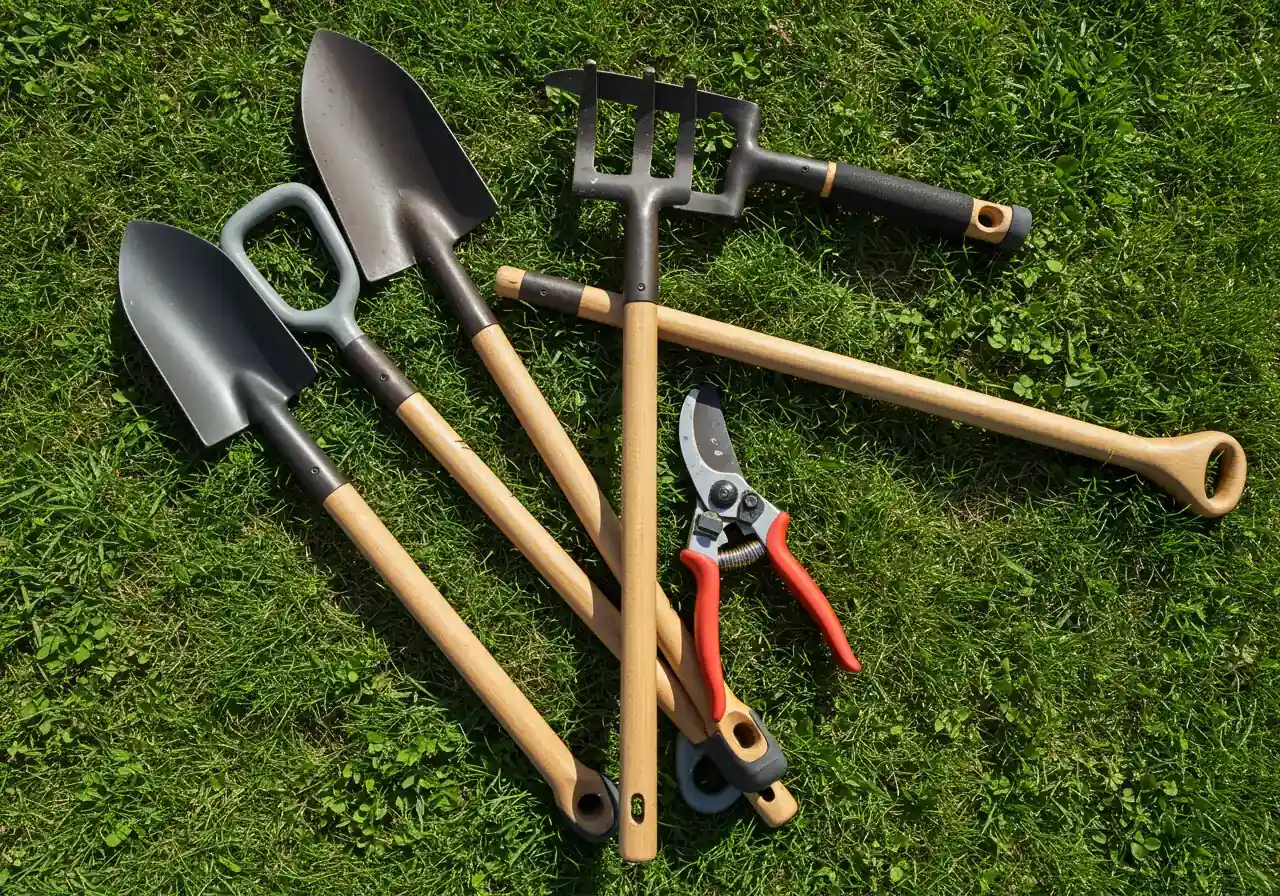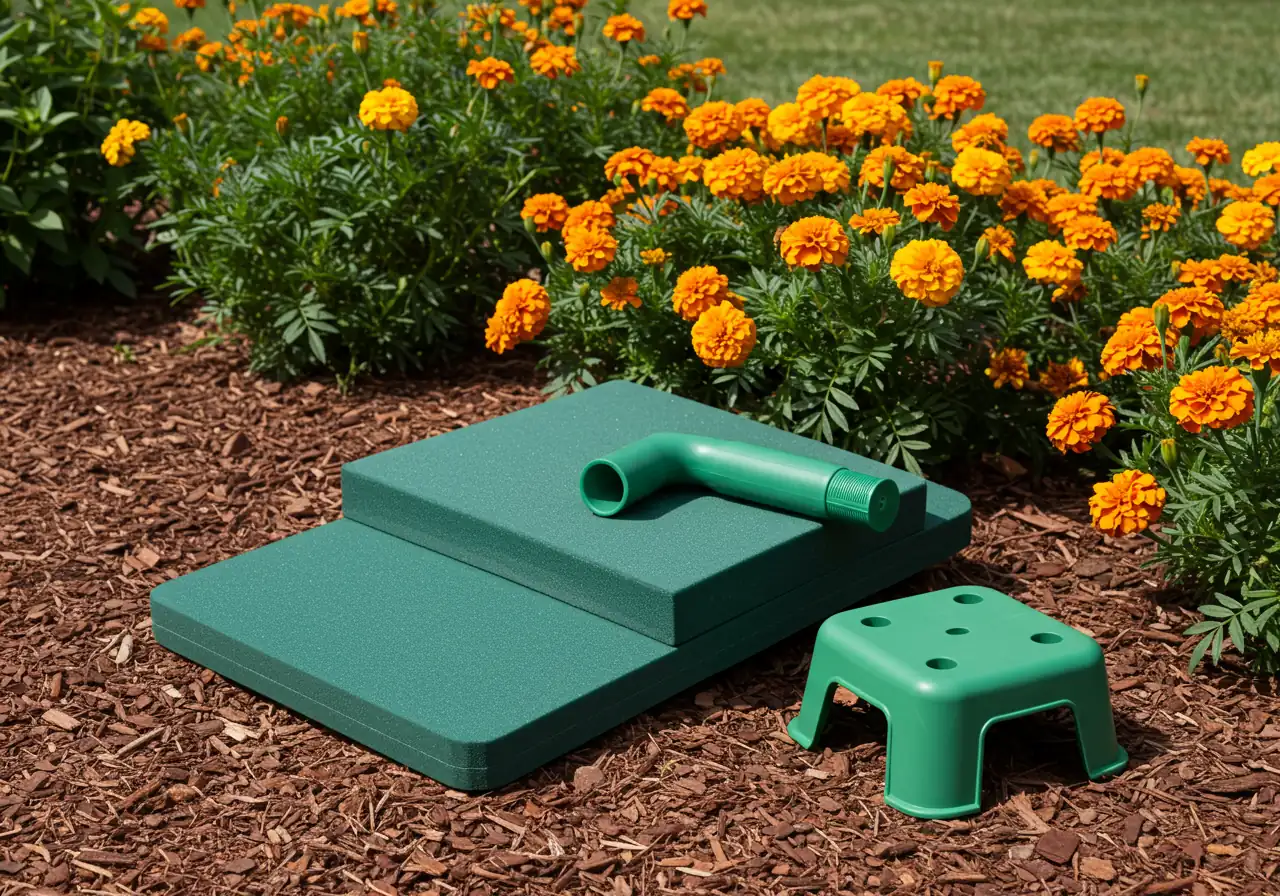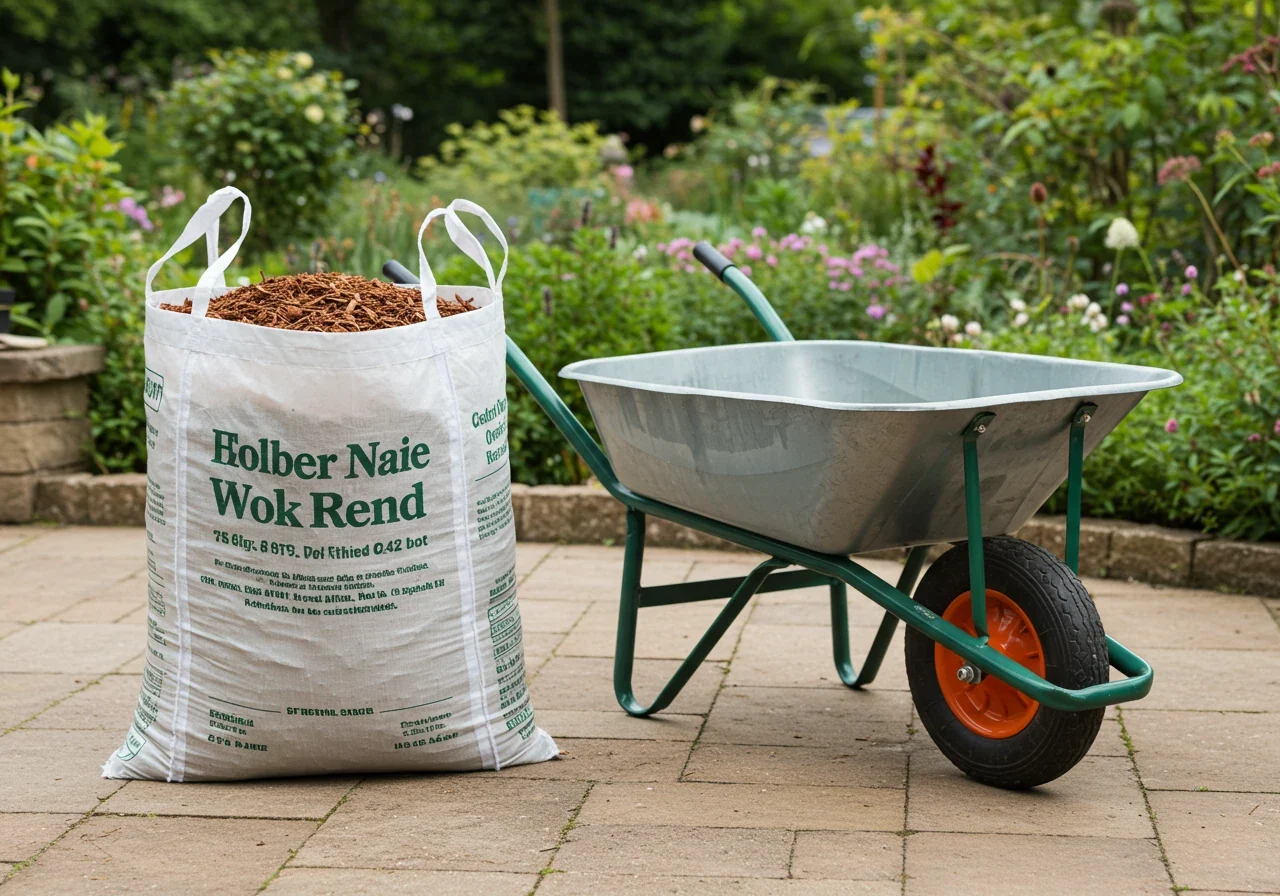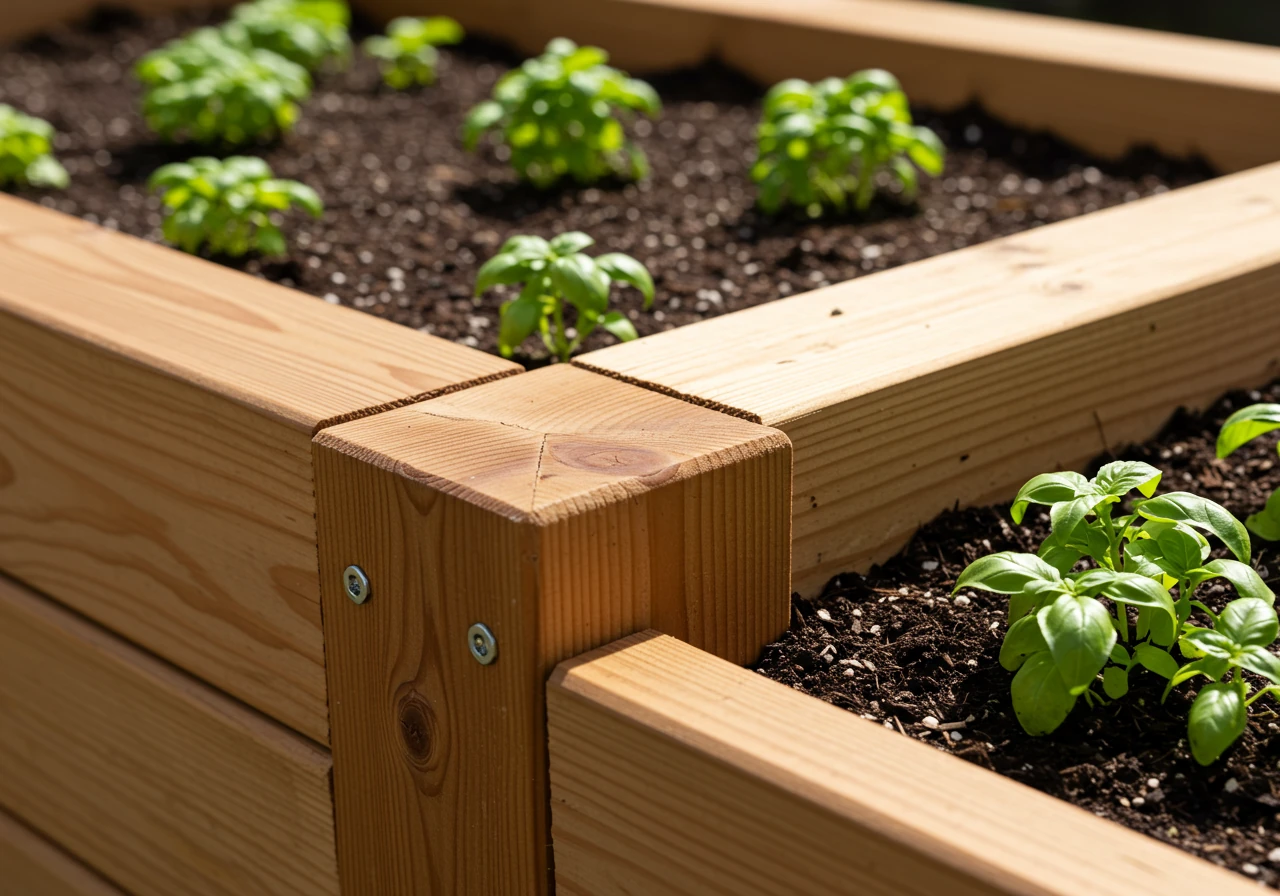Kenmore: Ergonomic Garden Tool Tips to Save Your Back
Quick Tips for Back-Friendly Gardening:
- Choose lightweight, ergonomic tools with comfortable grips and appropriate handle lengths.
- Always bend your knees and hips, keeping your back straight, when lifting or working low.
- Use kneeling pads or garden stools for ground-level tasks and switch positions frequently.
- Pace yourself: break large tasks into smaller sessions and take regular stretch breaks.
- Consider professional help for demanding jobs like major cleanups or heavy lifting.
Ready to enjoy your garden without the aches? Get professional help tailored to your needs.
Request Your Free Quote TodayIntroduction: Ouch! Gardening Shouldn’t Hurt – Especially Here in Kenmore
Ouch! Sound familiar? That little (or sometimes *big*) ache after a satisfying day spent tending your garden beds here in lovely Kenmore? We get it. Here in the wider Ottawa region, from Manotick to right here, we adore transforming our yards with beautiful *landscaping* and nurturing our plants. *Gardening* is supposed to be relaxing, right? A rewarding hobby, not a recipe for back pain!
The good news is, it doesn’t have to hurt. This guide is your friendly nudge towards *ergonomic gardening* – simple ways to adjust *how* you garden to protect your back and joints. Think of it as gardening smarter, not harder. We’ll share practical tips, from choosing the right tools to using better posture while weeding or planting, so you can spend more time enjoying the flowers and less time nursing sore muscles. Let’s make sure your passion for *gardening* brings you joy, not groans, season after season! Need help getting started? You can always contact us for advice.
Why Your Back is Begging for Ergonomics: Gardening Realities in Ottawa
Okay, let’s dig into *why* your back might be sending out an SOS after a day in the garden here in Ottawa. It’s not just you! Gardening is surprisingly physical work, and our local conditions add a unique twist.
Think about it: *gardening* involves a *lot* of bending, twisting, kneeling, and lifting. Whether you’re wrestling with that stubborn patch of weeds in Greely, turning over soil for new *planting* in Kenmore, or hauling bags of mulch, your body is working hard. Repetitive motions, like pulling countless weeds or digging holes for perennials, can put serious strain on your muscles and joints, especially your lower back. It’s easy to get carried away beautifying our *garden beds* and forget about our posture until that familiar twinge reminds us!
Now, add the Ottawa factor. We have distinct seasons, right? This often means intense bursts of activity. Spring requires a major push, often involving tasks like or heavy lifting when . Then comes fall, with leaf raking, pulling spent annuals, and maybe even tasks like . These peak seasons demand a lot from our bodies, often after periods of less intense activity.
Furthermore, depending on your specific spot in the region, you might be dealing with heavy clay soil that makes digging feel like excavating concrete, or rocky ground left behind by glaciers. Using the wrong shovel or dull tools just makes this harder, increasing the strain. That’s why thinking about isn’t just about preventing rust; it’s about making the job easier on you next season!
Ergonomics is simply about fitting the task to the person, not the other way around. It means using techniques and tools that reduce strain and make *landscaping* activities safer and more comfortable. Ignoring ergonomics is like inviting aches and pains to your garden party. Why risk injury when smarter techniques can keep you gardening happily for years? Sometimes, the most ergonomic choice for a really big job, like a massive spring or fall property clean up, is calling in reinforcements. Consider exploring options like a professional garden clean up service or checking out our range of landscaping services to save your back for the tasks you truly enjoy. Our teams serve areas including Metcalf and Marionville.
Your Ergonomic Toolkit: Choosing Gear That Works *For* You
Okay, let’s talk tools! You wouldn’t try to bake a cake with a hammer, right? (Well, maybe *some* cakes…) The same idea applies to *gardening*. Using the right gear, especially tools designed with *ergonomics* in mind, can turn a potential chore into a comfortable pleasure. Think of it as upgrading your *landscaping* toolkit from “Ouch!” to “Ahh.”

So, what makes a garden tool “ergonomic”? It’s all about designs that reduce strain on your body. Look for features like:
- Lighter Weight: Less heft means less effort to lift and maneuver. Aluminum or composite materials are your friends here.
- Padded or Contoured Grips: These provide comfort and better control, reducing hand fatigue and blisters. Bonus points if they fit *your* hand size well.
- Adjustable or Longer Handles: Telescoping handles let you adjust the tool to your height, minimizing bending and reaching. Long-handled weeders are back-savers!
- Bent or Curved Shafts: Often seen on shovels or spades, this design helps you maintain a more upright posture while digging into the *soil*.
- Spring Action or Ratchet Mechanisms: Found on pruners and loppers, these features multiply your cutting power, making tough cuts easier on your hands and wrists.
Let’s look at a couple of common tools:
- Shovels & Spades: Your standard shovel might have a straight wooden handle. An ergonomic version often features a lighter shaft (maybe fiberglass), a D-shaped handle for better grip and control, possibly a bent shaft to reduce back strain, and sometimes a larger step plate for easier digging. This makes tasks like turning over *garden beds* or engaging in detailed proper soil preparation techniques much less taxing.
- Hand Pruners: Basic pruners require significant hand strength. Ergonomic ones might have rotating handles that move *with* your fingers, reducing friction, or a ratchet mechanism that cuts in stages. They often have cushioned grips and are made from lighter materials. Perfect for keeping those shrubs in Nepean looking tidy!
Tips for Choosing Your Gear:
- Hold It: If possible, try tools out in the store. Feel the weight, the grip, the balance. Does it feel *right* for you?
- Match the Tool to the Task: Don’t use hand pruners for thick branches meant for loppers. Using the wrong tool, even an ergonomic one, causes strain. For big jobs like spreading material across large areas, consider tools designed for efficiency, similar to how professionals approach mulching and edging.
- Consider Your Strength: Be realistic about what you can comfortably handle. Lighter is often better, especially for longer *gardening* sessions.
- Don’t Forget Maintenance: Sharp tools require less force! Keep blades clean and sharp.
Investing in a few key ergonomic tools can make a world of difference to your *gardening* experience in Ottawa. You’ll likely find you can work longer, feel better afterwards, and maybe even tackle projects you’ve been avoiding. You can see the beautiful results of well-maintained gardens in our project gallery.
Of course, sometimes a job is just too big, even with the best tools. For those major seasonal overhauls or large property tidy-ups, remember that professional help is available. Whether you need a thorough Marionville yard cleanup service or more focused help like a professional Kenmore garden clean up service, bringing in experts can save you significant strain. Sometimes, the most ergonomic choice is letting someone else handle the heaviest lifting, like a full Marionville property cleanup service, so you can focus on the *planting* and nurturing you love. Choose wisely, and your body will thank you! See what others say on our Google My Business page.
Move Smarter, Not Harder: Back-Saving Techniques for Every Gardener
Okay, we’ve talked about *why* your back might be staging a protest and *what* tools can help. Now, let’s get into the *how* – the actual moves you make in the garden. Think of this as your *gardening* choreography lesson, designed to keep you moving gracefully (and pain-free!) whether you’re tending a small plot in Barrhaven or managing larger *landscaping* projects out in Richmond or Kars.


It all starts with being mindful. Before you even grab that shovel, take a moment. Do a few gentle stretches – arm circles, leg swings, torso twists. Warming up isn’t just for athletes; it prepares your muscles for the bending, lifting, and twisting ahead. For ideas on safe movement, check resources like the ParticipACTION safe activity tips.
The Golden Rule: Bend Your Knees, Not Your Back!
This applies to almost everything! But let’s break down safe techniques for common tasks:
-
Lifting (Bags of Soil, Rocks, Heavy Pots): We all have to lift things, especially when dealing with new materials. Choosing the right product during expert material selection guidance might mean smaller bags, but you still need to lift them safely.
- Step 1: Size Up the Load: Is it too heavy? Get help or use a wheelbarrow. Seriously, be honest!
- Step 2: Get Close: Stand right next to the object with your feet shoulder-width apart.
- Step 3: Bend Your Knees and Hips: Squat down, keeping your back straight (no hunching!). Engage your core muscles.
- Step 4: Grip Firmly: Get a good hold on the object.
- Step 5: Lift with Your Legs: Straighten your legs to lift, keeping the load close to your body. Let your strong leg muscles do the work.
- Step 6: Turn with Your Feet: If you need to change direction, pivot your feet. *Do not twist your torso while lifting or carrying!*
-
Digging and Shoveling: Whether turning *soil* for *planting* or creating neat edges, digging requires power, but it shouldn’t come from straining your back.
- Keep the shovel blade sharp – it makes a huge difference.
- Stand with feet apart, one foot slightly forward.
- Bend your knees slightly and keep your back straight.
- Step onto the back edge of the shovel blade with your foot, using your body weight to push it into the ground.
- Use your legs and arms to lift the load, keeping it close to your body.
- Avoid twisting; move your feet to dump the load.
- For tasks like preparing ground for extensive mulching and edging projects, take frequent breaks.
-
Weeding and Close-to-Ground Work: This is where many of us get into trouble, staying bent over for too long.
- Kneel: Use thick knee pads or a kneeling bench. Change kneeling positions often.
- Sit: A small garden stool or even an overturned bucket can save your back and knees.
- Alternate: Switch between kneeling, sitting, and using long-handled tools frequently. Don’t stay in one position for more than 15-20 minutes.
- Long-Handled Tools: Hoes and cultivators with long handles let you weed or loosen *soil* while standing more upright.
-
Raking:
- Use a rake that fits your height.
- Stand upright, feet apart.
- Use long, smooth strokes, pulling the rake towards you with your arms and legs, not just your back.
- Switch sides periodically to work muscles evenly.
Listen to Your Body & Know Your Limits
Pay attention to twinges or fatigue. Take frequent breaks to stretch, walk around, and hydrate. Sometimes, the smartest move is knowing when a job is too big or too strenuous. Tasks like a full seasonal tidy-up can be demanding. If you’re facing a large project, perhaps near Metcalfe, considering a professional Metcalf yard cleanup service or a comprehensive Ottawa garden clean up service can be the most back-friendly decision you make. It allows you to enjoy the beautiful results, like those seen in our inspiring garden transformations gallery, without the physical toll. If you’re ever unsure about tackling a project or need advice tailored to your specific yard, don’t hesitate to book an estimate or reach out and contact us. Gardening should build memories, not backaches! Manage your services easily through our customer portal.
Ergonomic Tool Focus
Prioritize tools that reduce strain:
- Long Handles: Reduce bending for tasks like weeding, cultivating, and edging.
- Lightweight Materials: Aluminum or fiberglass handles lessen lifting effort.
- Padded/Shaped Grips: Improve comfort and control, reducing hand fatigue.
- Ratchet/Spring Assist: Make cutting easier on hands and wrists (pruners, loppers).
- Wheeled Aids: Wheelbarrows and garden carts are essential for moving heavy loads.
See our gallery for examples of gardens maintained with care.
Key Techniques
Move smarter to protect your body:
- Bend Knees/Hips: The #1 rule for lifting and low work. Keep back straight.
- Keep Loads Close: Reduce leverage and strain on your back when carrying.
- Pivot Feet: Avoid twisting your torso, especially when lifting or shoveling.
- Alternate Positions: Don’t stay bent, kneeling, or sitting for too long. Mix it up!
- Warm-up & Stretch: Prepare muscles before starting and cool down after.
Proper techniques are crucial for large projects like sod installation.
Seasonal Smarts
Adapt your approach throughout the year:
- Spring: Pace heavy cleanup, use ergonomic shovels for digging, lift damp materials carefully.
- Summer: Use kneelers/stools for weeding, consider efficient watering systems, mow mindfully.
- Fall: Use lightweight rakes, ergonomic pruners for cutbacks, bulb planters for easier digging.
- Winter: Gently clear snow from shrubs, plan next season’s ergonomic improvements.
Need help with seasonal demands? Explore our Ottawa property cleanup service.
Your Ottawa Ergonomic Gardening Calendar: Seasonal Smarts
Okay, fellow Ottawa green thumbs! *Gardening* here isn’t just a hobby; it’s a four-season adventure, complete with its own set of physical demands. Just like you wouldn’t wear shorts in January (well, most of us wouldn’t!), your *gardening* approach needs to adapt to the season to keep those aches and pains at bay. Let’s break down the year with some ergonomic smarts.
Spring: The Great Garden Awakening (and Potential Back Strain)
Ah, spring in the Ottawa Valley! Everyone from Russell to Embrun is itching to get outside. But hold your horses (or should we say, wheelbarrows?). This season often involves the heaviest work.
- Pace Yourself: Resist the urge to do *everything* on the first warm weekend. Break up big cleanup tasks. Use lightweight rakes and wheelbarrows with pneumatic tires (easier to push!). When lifting soggy leaves or bags of collected debris, bend those knees! Consider composting debris on-site to reduce heavy hauling – your back *and* the environment will thank you.
- Dig Smart: Warming up your muscles before tackling compacted *soil* is key. Use ergonomic shovels with longer or bent handles. Take frequent breaks when turning over *garden beds* or digging holes for new *planting*. Remember, Rome wasn’t built in a day, and neither was your perfect garden. The results of careful spring prep can be stunning, much like the ones showcased in these inspiring garden transformations.
- Lift Light(er): Bags of soil, compost, and mulch can be deceptively heavy. Use proper lifting techniques (knees bent, back straight, load close). If possible, buy smaller bags or get help for the big ones.
Summer: Maintaining Momentum Without the Moans
Summer means longer days for enjoying your *landscaping*, but also ongoing maintenance.
- Weeding Wisely: Those persistent weeds love the summer sun as much as your flowers! Avoid prolonged bending. Use thick knee pads, a garden kneeler or stool, and switch positions often. Long-handled weeders are fantastic for reducing back strain.
- Water Without Woe: Lugging heavy watering cans across the lawn is a workout nobody needs. Use hoses with ergonomic spray nozzles. Better yet, consider installing soaker hoses or a drip irrigation system – it saves water and your energy.
- Mow Mindfully: Keep your back straight while mowing. Let the machine do the work. If you have a larger property, like some lovely spots in Embrun, consider a self-propelled or riding mower. Many find managing ongoing care easier by booking regular visits; you can often manage schedules through a convenient customer portal if using a service.
Fall: Prepping for the Big Sleep (Yours and the Garden’s)
Cooler weather brings leaf-raking, bulb-planting, and prepping the garden for winter.
- Leaf Relief: Use lightweight, ergonomic rakes. Rake smarter, not harder – use your arms and legs, not just your back, and avoid twisting motions. A leaf blower (used considerately!) or a mulching mower can significantly reduce raking time and strain.
- Cut Back Comfortably: Use sharp, ergonomic pruners and loppers for cutting back perennials. Get close to the plant by kneeling or sitting instead of reaching and straining. Remember, leaving some seed heads and stalks provides winter interest and food for birds – less work, more nature! At Clean Yards, we believe in nurturing gardens for the long haul; you can learn more about us and our approach to sustainable practices.
- Bulb Planting Power: Digging dozens of little holes can strain your wrists and back. Use long-handled bulb planters or consider a bulb auger attachment for your drill.
Winter: Rest, Recharge, and Plan Ergonomically
Even in winter, there are small tasks and planning opportunities.
- Gentle Giant: If heavy snow weighs down evergreen shrubs, gently brush it off with a broom, sweeping upwards. Avoid forceful shaking that can damage branches and strain your shoulders.
- Plan in Comfort: Use the downtime to plan next year’s garden improvements. Do it from a comfortable chair with good lighting. Think about garden layout changes that could reduce physical strain next season. If you’re considering booking services online for next year, it’s always wise to review our privacy policy and understand our terms and conditions beforehand. Your feedback is also valuable, see our estimate feedback page.
By tuning into the season and using these ergonomic tips, you can keep your Ottawa *gardening* experience joyful and (mostly) ouch-free all year round! Find more seasonal tips on the City of Ottawa’s gardening pages.
Visualizing the Benefit: Strain Reduction
Using ergonomic tools and techniques significantly reduces physical strain. While exact figures vary, here’s a conceptual representation:
Conceptual % Strain Reduction using Ergonomic Methods
Your Ergonomic Gardening Journey
1. Awareness
Recognizing that gardening can cause strain and deciding to garden smarter.
2. Tool Selection
Investing in key ergonomic tools like long-handled cultivators, lightweight shovels, and comfortable pruners.
3. Technique Practice
Consciously applying proper lifting, bending, kneeling, and movement techniques.
4. Pacing & Breaks
Learning to listen to your body, taking regular breaks, and spreading out large tasks.
5. Ongoing Comfort
Enjoying gardening with significantly less pain and fatigue, season after season.
Key Insights: Your Back Will Thank You!
Alright, let’s boil it down! Want to keep gardening in Ottawa without the *ouch* factor? Here’s the cheat sheet your back has been hoping for:
- Tool Time: Choose ergonomic tools – think lighter weight, comfy grips, and longer handles. They make tasks easier and less strenuous.
- Bend Knees, Not Back: This is the golden rule! Whether lifting bags of mulch for a new garden install or just moving a pot, squat down using your legs.
- Get Low Smartly: Kneel on pads or sit on a stool for weeding and planting. Avoid bending over at the waist for long periods. Your spine in Barrhaven (and everywhere else!) will appreciate it.
- Pace Yourself: Gardening isn’t a race. Take frequent breaks, stretch, and switch tasks often. Don’t try to do a massive property clean up all in one go.
- Know When to Call for Backup: Some jobs are just too big or strenuous. Tasks like laying large areas of turf during new sod installation or a huge seasonal tidy-up are often best left to the pros. Considering an Ottawa property cleanup service can be the smartest ergonomic decision you make!
Follow these simple tips, and you’ll be gardening more comfortably for years to come. Your back will definitely send you a mental thank you note!
FAQs: Your Ergonomic Gardening Questions Answered (Ottawa Edition)

If we had to pick just one, it’s bend your knees, not your back! Seriously, tattoo it on your trowel. Whether you’re lifting a bag of soil in Barrhaven or pulling a stubborn weed in Winchester, squat down using your powerful leg muscles. Keep your back straight and the load close. Your future self will definitely thank you for making this simple habit part of your gardening routine.
Oh, we know that Ottawa clay! First, invest in an ergonomic shovel – one with a sharp blade, maybe a bent handle, and a good foot step helps. Try digging after a light rain when the soil is softer. Amending your soil over time with compost helps too. For really big digging jobs, break it up over several days or consider if preparing the area might be easier with help from a professional Metcalf garden clean up service to get you started.
Absolutely! Gardening with arthritis requires choosing tools wisely. Look for lightweight tools with larger, padded, non-slip grips. Ratchet pruners or spring-assisted tools multiply your force, making cuts easier. Long-handled tools reduce bending *and* reaching. If gripping tools becomes consistently painful, focusing on less demanding tasks or exploring options for ongoing garden maintenance can help keep your garden beautiful without the hurt. For more info on managing arthritis, check resources like the Arthritis Society Canada.
Please, break it up! Trying to do a massive cleanup in one go, especially after a long Ottawa winter, is asking for trouble. Pushing yourself leads to fatigue, sloppy technique, and potential injury. Tackle one area at a time. Remember, sometimes the most ergonomic choice for overwhelming jobs is calling for reinforcements – a professional Ottawa yard cleanup service or even one specific to areas like the Marionville garden clean up service can handle the heavy lifting safely.
Yes, definitely! Raised beds, whether in Richmond or Osgoode, bring the garden up to you, significantly reducing the need to bend over or kneel deeply. This makes planting, weeding, and harvesting much easier on your back and knees. While they won’t help with broader tasks like lawn care, for focused gardening activities, raised beds are a fantastic ergonomic solution, especially if you have limited mobility.
Conclusion: Happy Gardening, Happy Back!
So there you have it! Your roadmap to trading those post-*gardening* groans for glorious blooms. Remember, *ergonomic gardening* isn’t about complicated rules; it’s simply about being kinder to your body while you cultivate your slice of paradise here in Kenmore or across the lovely Ottawa region, maybe out towards Manotick or Kars. By choosing smarter *tools*, using better body mechanics (bend those knees!), pacing yourself with our distinct seasons, and listening when your back whispers “enough!”, you keep aches out of your *landscaping* fun. The payoff is huge: more years enjoying the therapeutic joy of *gardening*, less time sidelined by *back pain*. A happy garden *and* a happy back – that’s the dream!
Ready to make it happen?
- Need a hand turning these tips into reality or tackling bigger *landscaping* projects? Contact Clean Yards for expert advice and services throughout the Ottawa area!
- Want a handy reminder? Bookmark this page!
- Got a favourite back-saving trick? Share your best *ergonomic gardening* tip! (Maybe on our Google page?)
Let us handle the heavy work so you can enjoy your garden pain-free!
Book Your Free Estimate NowFind more helpful tips on general back health from reputable sources like the Mayo Clinic.

